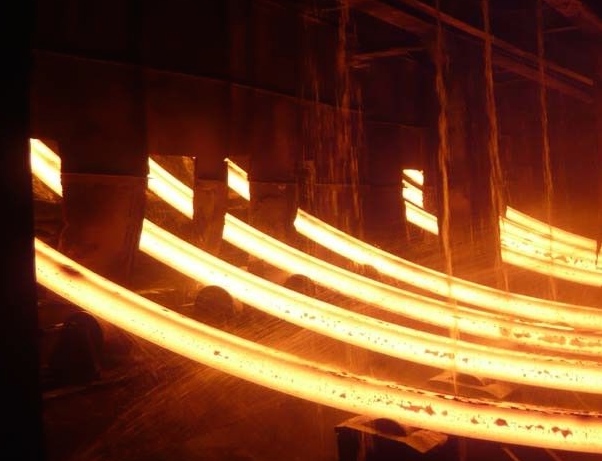
A tundish is an essential component of the continuous casting system in steelmaking. Located between the ladle and the casting molds, the tundish feeds molten steel to the molds at a regulated rate. Due to the temperature extremes involved, tundish refractory linings are designed to withstand thermal shock, prevent thermal loss, prevent oxidation, and resist erosion and corrosion – all while not contaminating the liquid steel with unwanted impurities. BassTech is a strategic supplier of performance enhancing additives for tundish refractory linings, including sodium metasilicate 9 MOL and our specialty phosphates.
Here are five interesting facts about tundish refractory linings:
1. The tundish has a permanent lining and a disposable lining
On top of being lined permanently with either refractory bricks or monolithics, a tundish also has a disposable lining. The disposable lining acts as a thermal and chemical barrier that protects the permanent liner while maintaining the temperature of the molten metal, and it needs to be replaced after one or more heats of molten steel. This refractory lining, which is sprayed on between heat cycles, contains our unique phosphate binder/deflocculant system that cures with either the residual heat or ambient temperature after cold starts.
2. Phosphates are used as binders and deflocculants in refractories
Phosphates help with strength development, dispersing other ingredients through a mix, and allowing control of set/working times. Our phosphates are also engineered to enhance flowability, prevent oxidation, prevent out-gassing and improve strength development at elevated temperatures.
3. Sodium Metasilicate 9 MOL is a low temperature binder
Sodium Metasilicate 9 MOL is extremely stable at ambient temperature and begins releasing significant amounts of water at about 80°C, which makes it a useful ingredient as a quick binder in single component systems at relatively low temperatures. It has shown excellent success in single component blends for low temperature strength development. In addition to strength development, the water kicks off the reactions for the other additives in the refractory mix.
4. Steel and slag residue in the tundish hardens into a “skull” that needs to be removed
Aside from extending the life of the permanent tundish lining, the disposable lining allows easier removal of the tundish skull. After being removed in a process called “deskulling,” the skull can usually be cycled back into the continuous casting process. Our phosphate additives prevent oxidation from the skull without adding detrimental impurities back into the composition.
5. The product of continuous casting is usually a billet, a bloom, or a slab
Billets, blooms, and slabs are considered semi-finished products. These are the materials used for most forms of steel work and may eventually become rails, pipes, wire, rods, or tubes.
Speak with an Expert
Are you a manufacturer of tundish refractory linings? We are a strategic supplier of performance enhancing additives for tundish refractory linings. To learn more about how BassTech International can assist you, feel free to reach out to one of our tundish refractory experts.
